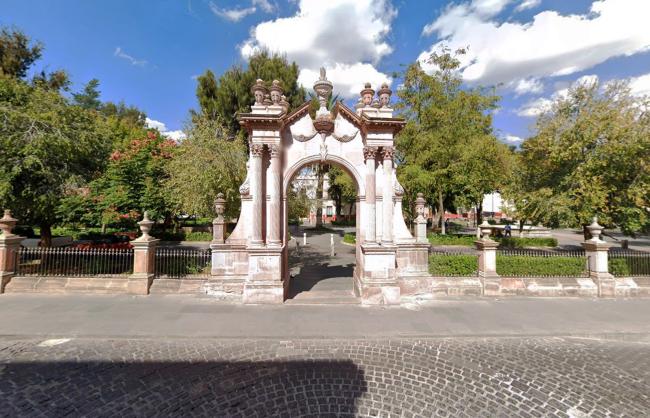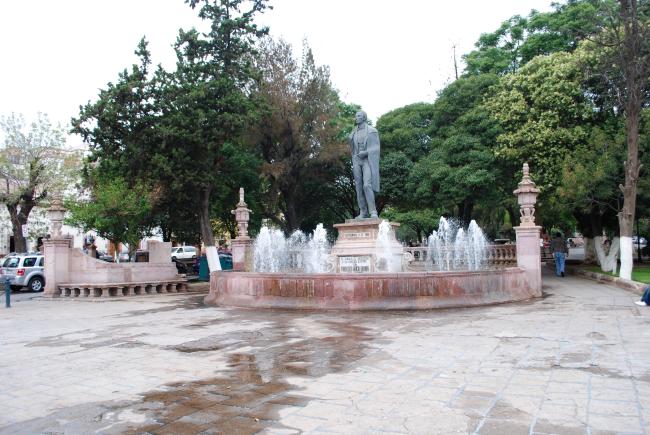
-

16_imagen_fachada_0301128001670206064.jpg
-

Alameda Trinidad García de la Cadena
-
Alameda Trinidad García de la Cadena
Kiosk at the Alameda in the city of Zacatecas
-
Alameda Trinidad García de la Cadena
-

Alameda Trinidad García de la Cadena
Fountain on southeast end of the Alameda in the city of Zacatecas
-
Alameda Trinidad García de la Cadena
Statue of Tata Pachito in a fountain on southeast end of the Alameda in the city of Zacatecas
Alameda Trinidad García de la Cadena
Conjunto Arquitectónico
This alameda has long been regarded as a majestic site, a promoter of family values and civic unity. Its origins date back to 1781, when the construction of a promenade in Zacatecas began, transforming it into a popular Sunday gathering spot. In 1789, a group of merchants and miners planted poplars, willows, and mulberry trees, and installed a protective fence around the area.
In 1831, it was officially designated as an alameda, and its territory was expanded. A fountain was built in 1835. Following the death of Francisco García Salinas in 1841, a mausoleum was erected to house his remains. On the northwest side of the alameda, a water reservoir was constructed, fed by the Socavón de la Esperanza from the El Edén mine. In 1902, the original fountains and kiosk were replaced.
The space also inspired Genaro Codina, who composed the "Marcha Aréchiga," also known as the "Marcha de Zacatecas," regarded as Mexico’s second national anthem.
A complete renovation took place in 1940 under the direction of architect Roberto Álvarez Espinosa.

